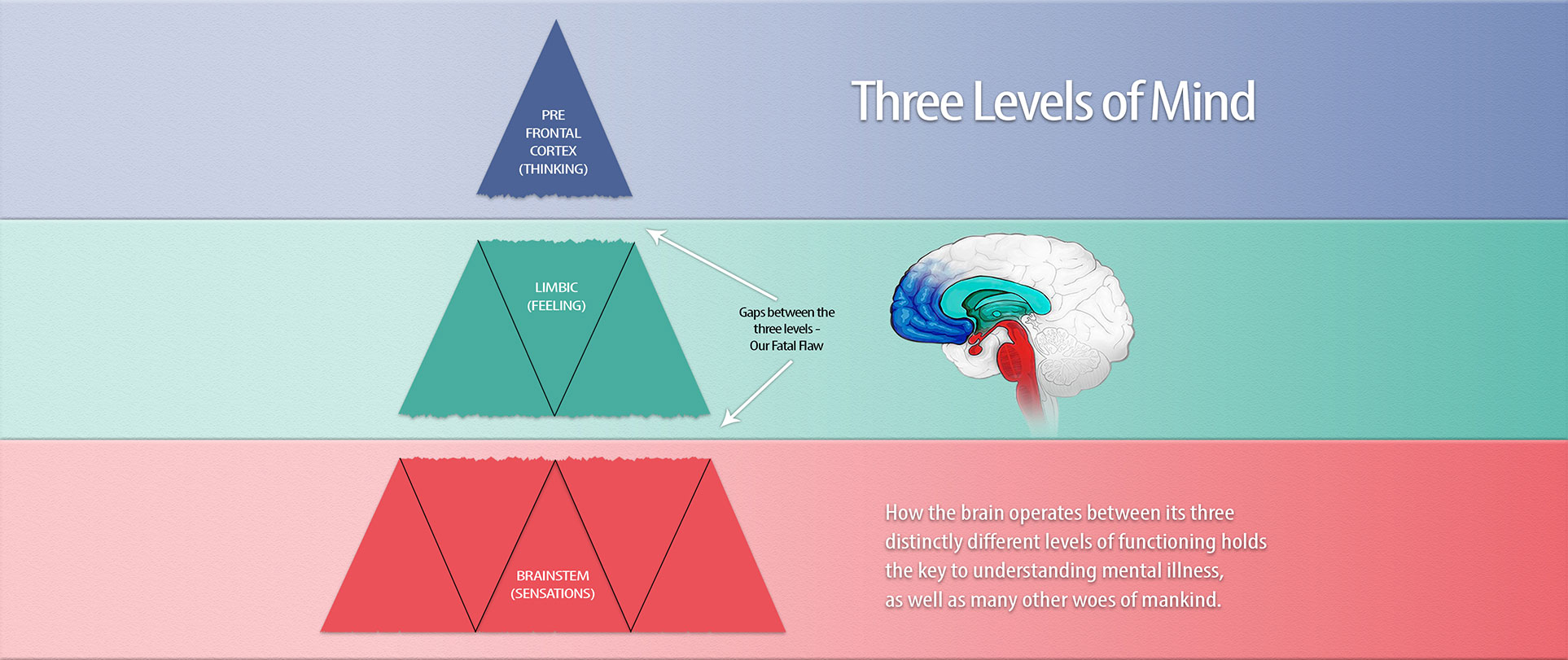When I write about, or try to explain the three levels of consciousness, it seems to be hard for people to envisage what it really means in terms of human functioning. To overcome this I use the analogy of a three story house.
The first level of this house is the basement, which represents the first level of consciousness, and is most probably our brainstem (science does not appear to understand this level and so research is sketchy).This level deals in sensation only – it is the area of the brain where we sense our lives.
The next level contains the feeling rooms, which is our second level of consciousness. Within the brain this area is known as the limbic system. The association between the limbic system and feelings has been reasonably well researched. What is not so well known is that the state of our feelings, for example whether we are happy or sad, positive or negative, comes from the way we sense our lives, and then our feelings let us know what we have sensed.
Level three is what I refer to as the penthouse of the human mind and brain. This area is known as the prefrontal cortex, the cognitive area where we think about our lives.
The house analogy is useful in many ways.
The upper structure of any house, or any building for that matter, depends on the size and strength of the foundations at the basement level. Weak and small foundations will lead to severe restrictions on what is possible in the feelings rooms above, and then the problem is compounded higher up in the penthouse. This is what we are experiencing with the increasing incidence of mental disorders in the human species. A traumatised (unloved) brainstem will lead to problems higher up in the feelings and cognitive part of the brain. These problems start down below and show up at higher levels as depression, anxiety, suicidal thoughts and other mental disorders.
Using the house analogy is also useful in informing us as to what treatment methods will be successful. It becomes obvious the commonly used talk therapies that keep a person in the penthouse of their mind will not fix the problems in the basement. So we need a therapy that takes a person down into the feeling rooms, and then continue on into the basement where the real problem lies. The main concept to understand about the need for a person to visit the basement of their mind is that it is most definitely not a cure by talking. The basement of the mind is the place of sensations, and when in this place almost all thought stops – apart from what may be called ‘The Conscious Observer’. Lack of understanding of this concept is why psychologists and psychiatrists are at a loss to explain the causes of mental disorders and why treatment plans are mostly superficial at best. Psychologists and psychiatrists remain in the penthouse of their own minds trying to figure out in an intellectual way what is going wrong. It is my understanding that their training through a Bachelor’s degree, then a Masters to a Doctorate level and beyond is based on ever-increasing levels of intellectual power. Their training does not involve any requirement to experience the power of brainstem sensations.
A house is built from the ground up and so is our brain. In evolutionary terms the brainstem developed first, so at same stage we survived solely on our senses. The limbic system evolved next and this was followed much later by the prefrontal cortex. This process in evolution should inform us that the brainstem with its sensations forms the foundations of a sound structure. If the ‘structure’ becomes unsound and develops depression and anxiety, then the obvious place to look is at the foundations. Unfortunately the psychological industry with its current methods of treatment is still in the penthouse trying to shore up the walls or shift the ‘furniture’ for a different look. They still seem to believe that the intellect is the over-riding power in the human brain, but the brain works from bottom to top, with the sensations being the ruling power.
An unloved brainstem (from poor parenting) was the cause of all my personal mental problems, and visiting the basement of my mind was the only way I could cure myself. Journeying into the basement of my own mind was a costly and time-consuming exercise, as well as being an extremely emotional and painful process. However the benefits of doing so have been better than I could ever have imagined.
